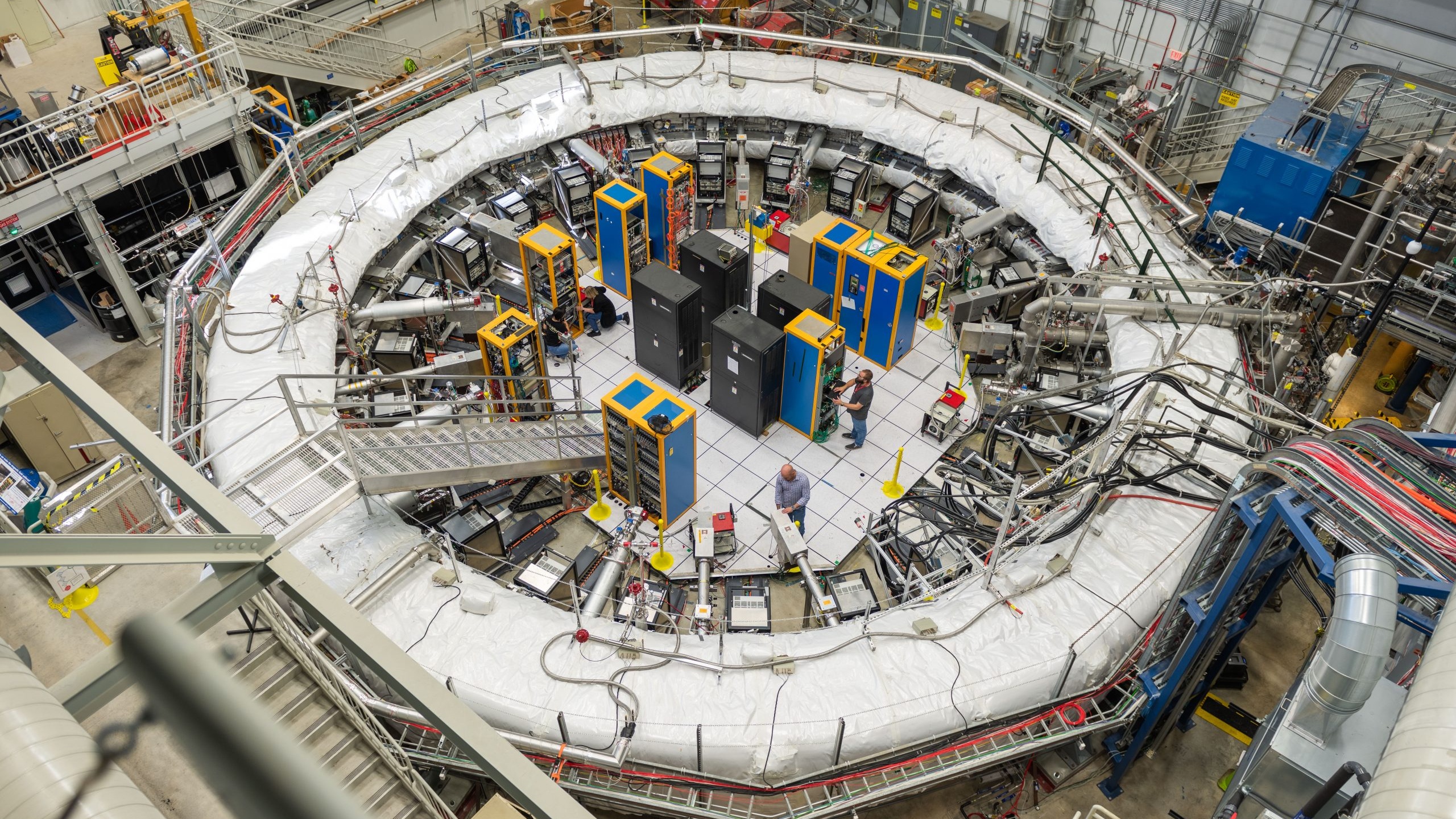Wobbling muon experiment could reveal a 5th force of nature — if the results hold up
The discovery promises to spark a revolution in physics, but more results are needed to know for sure.

A tiny wobbling particle may be about to reveal a fifth force of nature, scientists behind one of the biggest particle physics experiments say.
Physicists at the Fermi National Accelerator Laboratory, or Fermilab, near Chicago have found more evidence that the muon, a subatomic particle, is wobbling far more than it should — and they think it's because an unknown force is pushing it.
The results build on a previous experiment made in 2021 but produced four times the data with the experimental uncertainty reduced by a factor of two. If the findings are true, and the theoretical controversies around these measurements can be overcome, they represent a breakthrough in physics of a kind that hasn't been seen for 50 years, when the dominant theory to explain subatomic particles was solidified.
In other words, the muon's minute wobbling — known as its magnetic moment — has the potential to shake the very foundations of science.
"We're really probing new territory," Brendan Casey, a senior scientist at Fermilab who works on the experiment, known as Muon g-2, said in a statement. "We're determining the muon magnetic moment at a better precision than it has ever been seen before."
Related: A tiny, wobbling muon just shook particle physics to its core
Occasionally referred to as "fat electrons," muons are similar to electrons but are 200 times heavier and radioactively unstable — decaying in mere millionths of a second into electrons and tiny, ghostly, chargeless particles known as neutrinos. Muons also have a property called spin, which makes them behave as if they were tiny magnets, causing them to wobble like mini gyroscopes when inside a magnetic field.
Get the Space.com Newsletter
Breaking space news, the latest updates on rocket launches, skywatching events and more!
To investigate the muon's wobbling, physicists at Fermilab sent the particles flying around a minus 450 degree Fahrenheit (minus 268 degrees Celsius) superconducting magnetic ring at nearly the speed of light — a speed that, due to relativistic time dilation, extends the muons' short lifetimes by a factor of about 3,000.
By looking at how muons wobbled as they made thousands of laps around the 50-foot-diameter (15 meters) ring, the physicists compiled data suggesting that the muon was wobbling far more than it should be.
The explanation, the study scientists say, is the existence of something not yet accounted for by the Standard Model — the set of equations that explain all subatomic particles, which has remained unchanged since the mid-1970s.
This mysterious something could be a completely unknown force of nature (the known four are gravitational, electromagnetic and the strong and weak nuclear forces). Alternatively, it could be an unknown exotic particle, or evidence of a new dimension or an undiscovered aspect of space-time.
But whichever way they slice it, the physicists' data suggests that something unknown is nudging and tugging at the muons inside the ring.
Full confirmation will take a little while longer, however. To be as certain as possible, physicists will use all of the data collected during the g-2 experiment's 2018 to 2023 run: The current result only takes data from 2019 and 2020. Secondly, they will need to wait for theoretical predictions from the Standard Model to catch up.
There are currently two theoretical methods for calculating what the muon's wobble should be under the Standard Model. These two methods produce conflicting predictions. Some of these calculations, including one published the same week as the 2021 g-2 experiment findings, give a much larger value to the theoretical uncertainty of the muon's magnetic moment — threatening to rob the experiment of its physics-breaking significance.
Another experiment, using data from the CMD-3 accelerator in Novosibirsk, Russia, also appears to find the muons wobbling within normal bounds, but the experiment directly contradicts a previous run of the accelerator that hinted at an opposite result.
Fermilab researchers hope that the full results, which they expect to be ready in 2025, could be precise enough to give a clear reading.
The scientists have submitted their work for publication in the journal Physical Review Letters; a preprint of the findings can be found here.
This article was provided by Live Science.
Join our Space Forums to keep talking space on the latest missions, night sky and more! And if you have a news tip, correction or comment, let us know at: community@space.com.

Ben Turner is a U.K. based staff writer at Live Science. He covers physics and astronomy, among other topics like weird animals and climate change. He graduated from University College London with a degree in particle physics before training as a journalist. When he's not writing, Ben enjoys reading literature, playing the guitar and embarrassing himself with chess.










